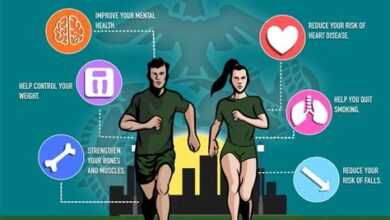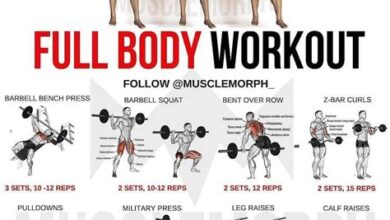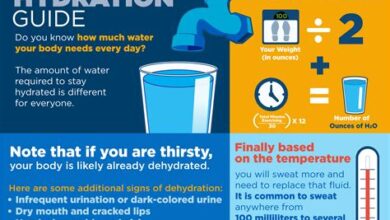The Importance of Warm-Up and Cool-Down Exercises

Maximize your workout with our comprehensive guide to warm-up and cool-down techniques. Learn how to improve performance and recovery benefits.As a blogger, I understand the importance of physical fitness and the role that warm-up and cool-down exercises play in maintaining a healthy exercise routine. In this blog post, we will be exploring the significance of incorporating warm-up and cool-down exercises into your workout regimen. From the benefits of warming up to the various types of warm-up exercises, we will delve into the impact that these exercises have on improving overall performance. Additionally, we will discuss the importance of implementing proper cool-down techniques and the recovery benefits that come with it. Whether you are an athlete, a fitness enthusiast, or someone just starting their workout journey, understanding the importance of these exercises is crucial for achieving long-term physical health and fitness goals. So, let’s dive in and explore why warm-up and cool-down exercises are essential for a well-rounded exercise routine.
Benefits of Warming-Up
Warming-up before a workout is essential for preventing injury and preparing the body for physical activity. By gradually increasing the heart rate and circulation, warming-up helps to loosen the muscles and increase joint flexibility, reducing the risk of strains and sprains during exercise. Additionally, a proper warm-up dilates the blood vessels, which allows more oxygen-rich blood to reach the muscles, improving overall performance and endurance.
Another benefit of warming-up is the mental readiness it provides. Taking the time to warm up allows individuals to mentally prepare for the upcoming exercise, helping to improve focus and concentration. This psychological readiness can lead to a more productive and effective workout, as individuals are better able to fully engage in the physical activity without distractions or hesitation.
Furthermore, warming-up can help to jumpstart the body’s metabolic processes. By gradually increasing the intensity of the warm-up exercises, the body begins to shift from a resting state to an active state, activating the cardiovascular and respiratory systems. This prepares the body for the increased energy demands of the main workout, ultimately increasing the total calorie burn and contributing to better overall fitness.
Types of Warm-Up Exercises
When it comes to warming up before a workout, there are several different types of exercises that can be beneficial for preparing the body for more intense physical activity. One common type of warm-up exercise is dynamic stretching, which involves moving your body through a full range of motion to increase flexibility and blood flow to the muscles. This can include exercises like arm circles, leg swings, and lunges. Another type of warm-up exercise is cardio-based, such as jogging or cycling, which raises the heart rate and prepares the cardiovascular system for exercise. Additionally, there are also specific warm-up exercises for different types of workouts, such as resistance band exercises for strength training or agility drills for sports-specific activities.
In addition to these physical warm-up exercises, mental preparation can also be an important aspect of warming up for a workout. Visualization techniques and mental focus exercises can help athletes get into the right mindset for their training or competition. It’s important to choose warm-up exercises that are appropriate for the specific activity you will be doing, as well as your individual fitness level and any pre-existing injuries or conditions.
Overall, the types of warm-up exercises you choose should be aimed at increasing blood flow to the muscles, improving flexibility, raising the heart rate, and mentally preparing for the upcoming physical activity. By incorporating a variety of warm-up exercises into your pre-workout routine, you can help minimize the risk of injury and improve your overall performance.
Impact of Warm-Up on Performance
The Importance of Warm-Up and Cool-Down Exercises
Warm-up exercises play a crucial role in improving performance during physical activities. When our bodies are at rest, our muscles and joints are stiff and not ready for intense physical activities. By engaging in warm-up exercises such as light jogging, stretching, and dynamic movements, our bodies gradually increase in temperature and blood flow, preparing our muscles and joints for more strenuous activities.
As the body temperature rises during warm-up exercises, the muscles become more flexible, which in turn improves our range of motion and reduces the risk of injuries. Additionally, warm-up exercises help to mentally prepare athletes for their training or competition, allowing them to focus and perform at their best. Therefore, the impact of warm-up exercises is significant in optimizing performance and minimizing the risk of injuries.
Research has shown that individuals who engage in proper warm-up routines demonstrate enhanced speed, agility, and overall performance during physical activities. Furthermore, athletes who incorporate warm-up exercises into their training have been found to have quicker reaction times and improved coordination, leading to better overall performance on the field or in the gym. Therefore, it is evident that the impact of warm-up exercises on performance is not to be underestimated.
Cool-Down Techniques
After a strenuous workout, it’s important to allow your body to return to its normal state. This is where the cool-down techniques come into play. One effective cool-down technique is to perform light cardiovascular exercises such as walking or cycling at a slower pace. By gradually reducing the intensity of your workout, you’re allowing your heart rate to gradually return to its resting rate, preventing dizziness or fainting.
Another effective cool-down technique is to incorporate stretching exercises. This helps to reduce muscle stiffness and improve flexibility. Focus on stretching the major muscle groups that were used during your workout, holding each stretch for 15-30 seconds. This will help to alleviate any muscle tightness and reduce the risk of post-exercise muscle soreness.
Finally, another important cool-down technique is to stay hydrated. Drinking water after a workout helps to replace the fluids lost through sweat and can aid in the recovery process. It’s important to replenish your body’s water and electrolyte levels to prevent dehydration and maintain proper muscle function.
Recovery Benefits of Cool-Down
The Importance of Warm-Up and Cool-Down Exercises
After a strenuous workout or intense physical activity, it is crucial to give your body the proper time and attention it needs to recover. One of the most effective ways to aid in this recovery process is by incorporating a cool-down session at the end of your workout. Cool-down exercises help to gradually bring your heart rate back to its resting state, and allow your muscles to slowly relax and recover from the stress they were put under during exercise. This can significantly reduce the chances of experiencing muscle soreness and stiffness the following day.
Moreover, a proper cool-down can also help to prevent the build-up of lactic acid in your muscles, which is a major contributor to post-exercise muscle fatigue. When you engage in cool-down exercises, it helps to promote circulation and flush out the waste products accumulated in your muscles during intense workouts. This not only speeds up the recovery process but also aids in enhancing your overall performance during subsequent workouts by promoting muscle flexibility and reducing the risk of injury.
By allowing the body to gradually transition from a state of rigorous activity to a more relaxed state, cool-down exercises can also have a positive impact on your mental well-being. You may find that these exercises help to calm your mind and reduce the feelings of fatigue and exhaustion often experienced after a challenging workout. This can make it easier to wind down after your session and promote a sense of relaxation and overall well-being.





